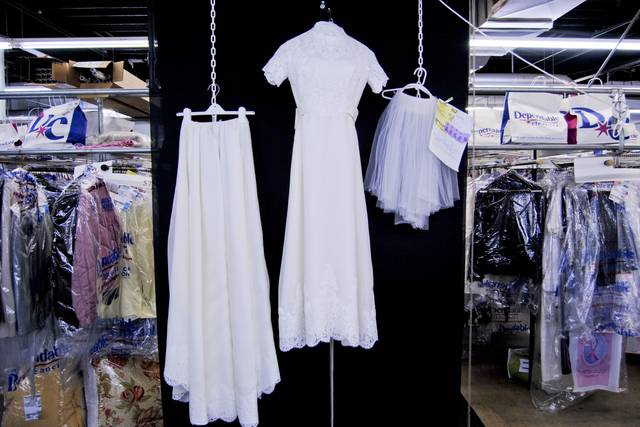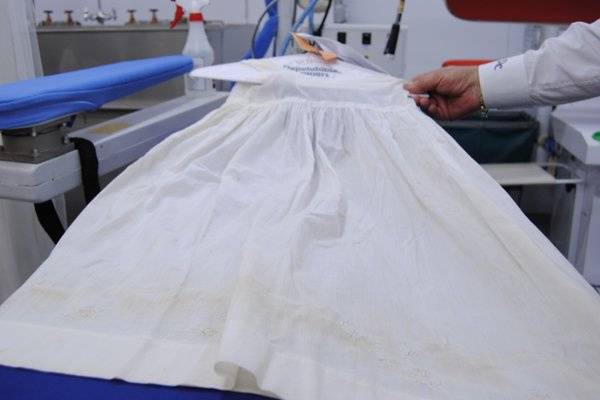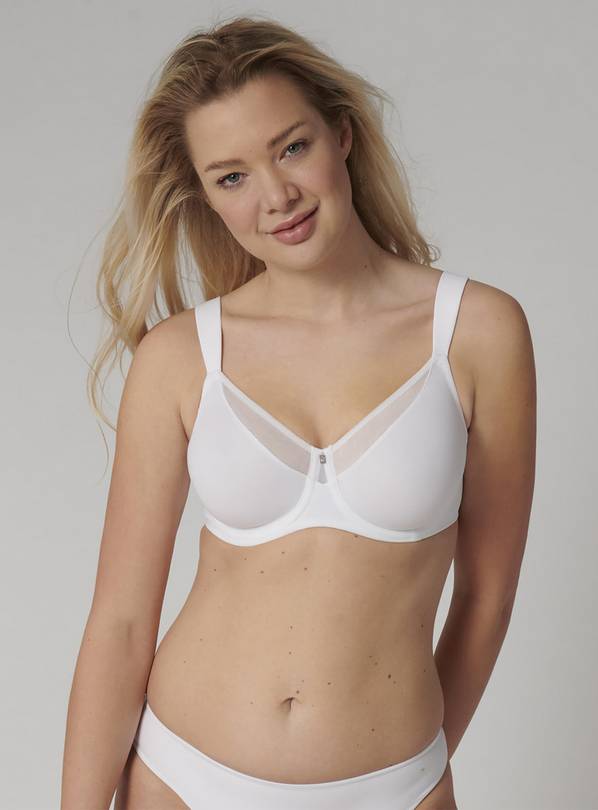How to Maintain Designer Clothes - Dependable Cleaners
5 (740) · $ 15.50 · In stock

Learn how to care for and maintain your designer clothes to keep them looking pristine. Discover expert tips, FAQs, and more for preserving luxury fashion.
Designer garments can look fantastic, especially when brand new. Unfortunately, these garments account for a disproportionately large number of problems and its hard to keep them looking new. Why are designer clothes so hard to maintain? The reason for this is that the effort put into the overall design and the construction of the outer cloth is often far greater than the materials and research on the internal components and the all-important care label instructions.
As a result, the cleaner may be bewildered by the considerable changes in the garment’s appearance. When the designer is contacted it often emerges that the care label was devised not by proper test cleans but by guesswork. All too frequently, the cleaner is blamed for following the care label and in so doing revealing the latent faults in the garment.
Then when the customer returns to pick up a garment believed to be in perfect condition and only needing “freshening up”, now looking like a second-hand item. They usually blame the cleaner but this is often unfair. Dealing with a disappointed customers reasonably demanding compensation for changes beyond the control of the cleaners is a hassle for all. Below are some typical problems that are currently affecting both designer goods and their less expensive competition.
Unless otherwise stated, the garments in these case studies were dry-cleaned according to the care label.
Coat loses its former sparkle
Fault: The owner said that this coat had an attractive “sparkle” when it was brought in but that this had disappeared during cleaning.
Cause: An examination under 15x magnification with good lighting revealed remnants of a coating on the weft yarns (those that run across the garment). More of the coating remained on protected pocket material but this came away in a standard rub test. The coating is not fast to standard dry-cleaning.
Responsibility: This problem relates to the maker’s design and specification - the coating on the weft yarns has not been designed for dry-cleaning.
Rectification: None. The owner was advised to return the garment to the place of purchase.
Print bleeds into background
Fault: During dry-cleaning the black print on this dress bled into the pale background.
Cause: The standard colorfastness test to dry-cleaning (given in ISO 105 part D02, which is non-destructive) indicated that the print is not fast to cleaning solvent.
Responsibility: The problem here was inevitable once the cleaner followed the care label information. The responsibility lies with the garment maker and ultimately with the original cloth printer. This fault should have been picked up by the garment maker’s checks on goods inward - a simple in-house check is quite sufficient.
Rectification: None.
Leather trousers shrink and wrinkle
Fault: These trousers wrinkled extensively during cleaning.
Cause: The leather tanner will flatten the three-dimensional barrel-shaped hide to create garment leather and this inevitably stretches it to some extent. This stretch is set into the skins and survives garment make-up and normal wear. However dry-cleaning solvent will relax the stretch by deeply lubricating the leather. Makers allow a tolerance of 3% relaxation shrinkage in any direction.
Responsibility: The maker, and ultimately the original tanner, are responsible for the relaxation shrinkage occurring, but the cleaner should take responsibility for rectifying it as far as possible. This is part of the cleaner’s craft skill.
Rectification: The garment should be re-finished using tension and vacuum to eliminate the pucker and regain the trousers’ original shape and size.
Rubbing from seat belt damages dyes
Fault: White marks developed on the edges and proud points of this jacket’s right lapel during cleaning.
Cause: This jacket has been worn in a car with the driver’s seat belt fastened. The belt was probably made from heavy-duty nylon and the edge and face have rubbed the jacket continually. The dry-cleaning machine process has flushed away the damaged dyes and fibers, revealing the extensive damage now seen. The other lapel is unaffected.
Responsibility: The wearer is responsible. An expensive designer jacket would not have the hard-wearing qualities normally expected of more every day wear and of fabrics such as polyester cotton. A designer jacket is not normally constructed to withstand abrasion from a nylon seat belt.
Rectification: None.
Pocket trims fray at the edges
Fault: The edges of the pocket trims were frayed when this garment was taken out of the dry-cleaning machine.
Cause: Examining the garment with a hand-held magnifying inspection glass revealed that the trim is based on coated cotton ground fabric but when this trim was cut out, the edges were left raw.
The coating on the cloth will have kept the edges intact in normal wear but they have broken-up during the machine process.
Responsibility: This lies with the garment maker. This fault should have been revealed in the clean ability test, if this was carried out correctly.
Rectification: None.
Local snagging on high-quality wool jacket
Fault: This designer suit was made from high-quality, very fine wool yarns. After it had been cleaned, an area of broken and frayed yarns became visible on the jacket.
Cause: The damaged yarns are now fluffed out and very visible and this indicates that the damage occurred before the jacket was cleaned. The damage is localized so it did not result from a loose scalpel or other sharp object left in the load. The reason it was not visible before cleaning is that the damaged yarns would have been held into the fabric by the yarn oils. It is only when the cleaning solvent has removed the oils that the yarns have risen from the surface and fluffed out.
Responsibility: The damage could have occurred if there were scissors on the counter or if the cleaner uses wire hangers. In this instance it is far more likely to have occurred during a period of normal wear, so the owner should be taking responsibility.
Rectification: This is a prime candidate for re-weaving. The repair will not be invisible but will certainly create a wearable garment.
While we do everything possible to protect your favorite designer garments, something’s are unpredictable no matter how much knowledge a full service cleaners has. Together we will help resolve these issues which are infrequent, however, require experience and reputability in finding an acceptable solution for the owner.

How To Properly Clean And Care For Secondhand Clothing - The Good

How to Maintain Designer Clothes - Dependable Cleaners

Dependable Cleaners

The ultimate style guide to men's spring fashion 2023

High Quality Cleaning Uniforms: Personalised Workwear for Cleaning

How to Wash Designer Clothing: A Comprehensive Guide to Care for
:max_bytes(150000):strip_icc()/how-to-dry-clean-at-home-5076182-hero-70252bac30f04d728efc9786db03f202.jpg)
How to Dry Clean at Home

Best online clothing stores and brands 2024
:max_bytes(150000):strip_icc()/what-really-happens-at-the-drycleaner-0637-acef062d5a034b6593a64a7a904f4005_1-45c58e4db85c4d03b1fe6c39a1e123fd.jpg)
How Does Dry Cleaning Work?

Dependable Cleaners - Dress & Attire - Milton, MA - WeddingWire

Dependable Cleaners - Dress & Attire - Milton, MA - WeddingWire

The Care and Maintenance of Designer Clothes by cultmodern
:max_bytes(150000):strip_icc()/better-laundry-results-with-chlorine-bleach-2145786-v7-HL-FINAL-e11ceebba0164d7bb42dc7339233c0bc.jpg)
6 Chlorine Bleach Tips for Better Laundry Results
:max_bytes(150000):strip_icc()/what-really-happens-at-the-drycleaner-0634-4278c18999dc438ca84df2e58abccd81.jpg)
How Does Dry Cleaning Work?

Household Tips To Keep Your Clothes Clean





![7 Best Designer Fashion Rental Services [Updated 2023]](https://gothammag.com/get/files/image/galleries/woman-trying-clothes-getty.jpg)

